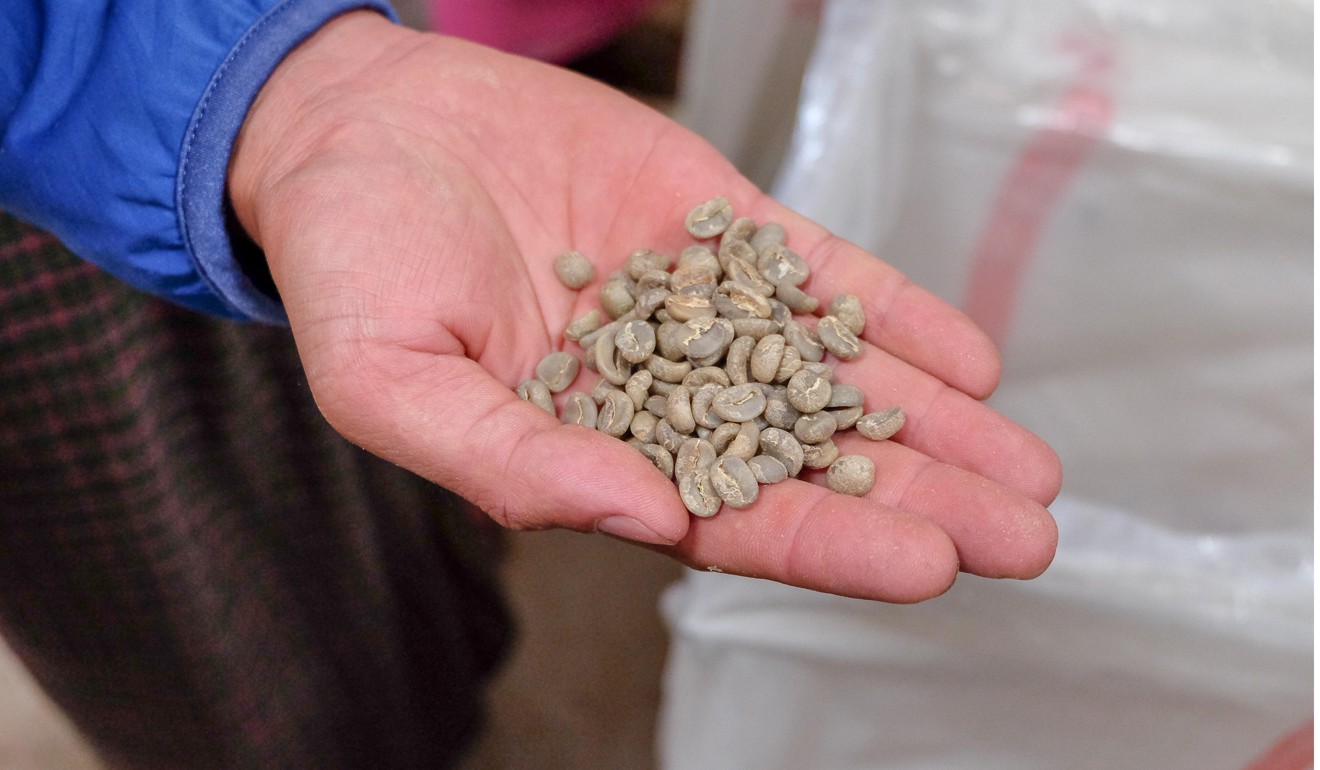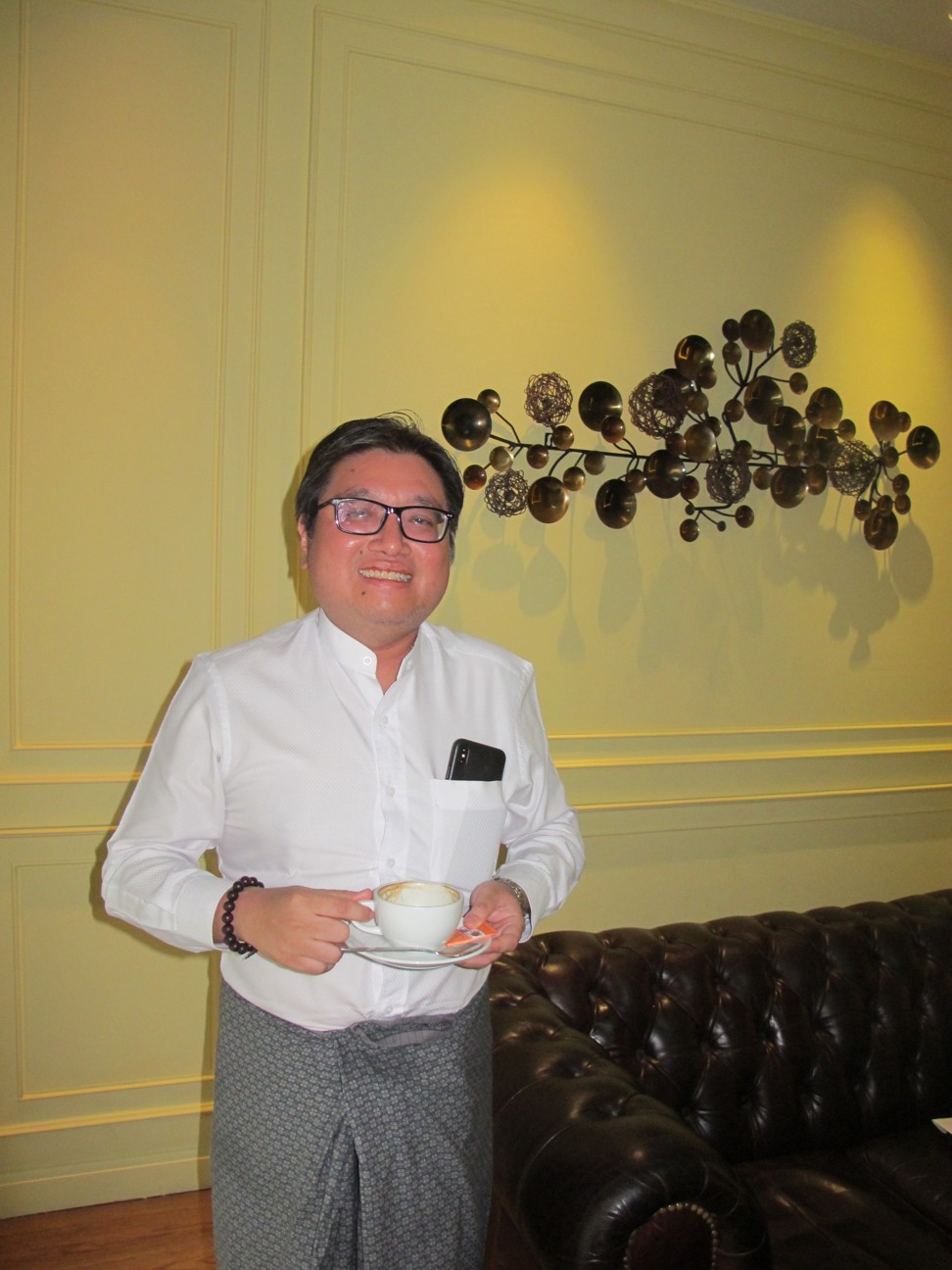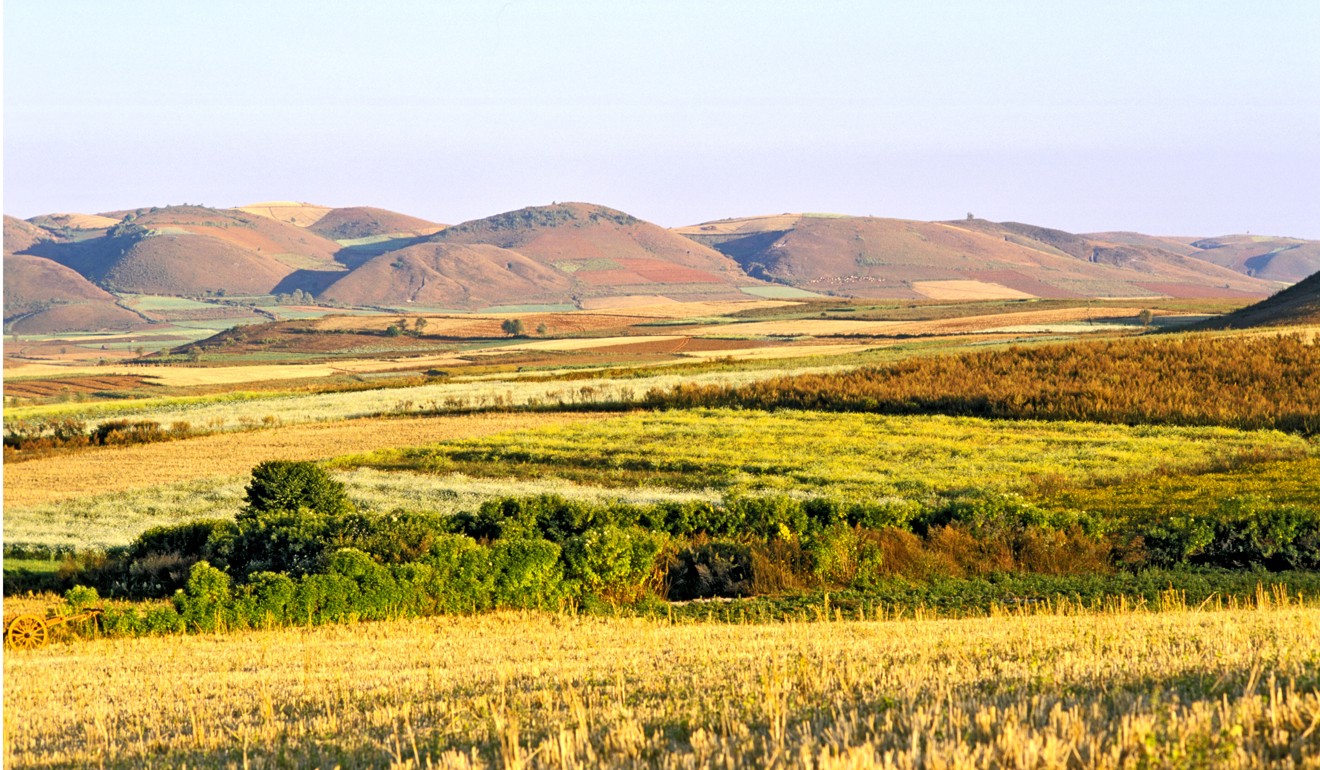
Out with opium, in with coffee as Myanmar targets speciality market
- With help from aid groups, Myanmar is turning itself into a speciality coffee producer looking for a niche in the global market
- But after the Rohingya tragedy, focusing domestically looks the better play
Myanmese entrepreneur Ngwe Tun plans to send a shipment of expensive Geisha coffee to Hong Kong in April next year, notching up another first for the country’s fledgling “speciality” coffee industry.
Ngwe Tun, 43, founder and director of Aung Nay Lin Htun – which has been producing coffee under the Genius brand since 2012 – started importing Geisha coffee trees from Panama four years ago.
Why we love coffee so much: the bitter truth about caffeine
The first crop of the speciality beans should be ready for harvest in Ywa Ngan township, in Myanmar’s eastern Shan State, later this month, and should yield around 500 kilograms (1,100 pounds).
“Arabica Geisha is among the most expensive coffees in the world,” Ngwe Tun says. “A lot of buyers in Hong Kong, Singapore and Taiwan are excited about the product, as it was not available from Asia before.”
Geisha, a variety of the world’s dominant arabica coffee species, originated in Gesha, Ethiopia – no one seems to know where the “Geisha” misnomer originated. It was transplanted in Panama in the 1960s, where it was successfully cultivated. It remained relatively obscure for decades until 2004, when it won first place in a Best of Panama coffee competition. This year, a batch of Geisha coffee sold for US$803 per pound (US$364 per kilogram), making it the most expensive coffee in the world.

Ngwe Tun is hoping to reap a more modest US$20 to US$25 per kilogram for his own Geisha grown by Shan farmers, who he says will get a good percentage of the sales price.
Speciality coffee has become a new export niche for Myanmar’s coffee industry. On October 12, the Shan State-based Green Gold cooperative shipped its first container to France as part of a five-year agreement with French coffee specialist Malongo. The shipment earned the Myanmar cooperative US$35,000.
“The best coffee we had was of such high quality that Malongo paid US$8 per kilogram, almost double the average price for arabica,” says Troels Vester, Myanmar country manager for the United Nations Office on Drugs and Crime, which is supporting coffee growing in Shan State in a bid to wean farmers off another speciality crop: opium.

The UN body has been trying to stop farmers in Shan and Kachin states from growing opium via crop-substitution programmes for decades, with a dubious success record.
Myanmar remains the world’s second-largest opium producer, after Afghanistan. Opium poppies are one of the few sustainable cash crops for the impoverished populations of northern Myanmar, where a combination of remoteness, lack of infrastructure and decades of government neglect make them an easy target for drug traffickers.
Past efforts to replace opium – which can earn a farmer US$2,000 a year – with alternative cash crops such as cabbage have largely failed thanks to the difficulties of getting such perishable goods to market.

The UN agency started experimenting with coffee in 2014, initially in the Hopong and Loilem townships of southern Shan State. Now those coffee trees are starting to bear fruit.
“This is a breakthrough,” Vester says. It has been more successful than past efforts because the difference “is the size of what we’re doing and the results we’ve had”.
Fifty-five villages, comprising 968 families, are cultivating arabica coffee on 1,000 hectares of land in Shan State, where the altitude is about 1,250 metres (4,100 feet) above sea level. Both opium and arabica coffee need sunshine, plenty of rainfall and high altitudes to thrive.
Myanmar coffee is good but it’s not as good as the Americans are saying
The UN project, which has a contract to sell all its arabica coffee to Malongo until 2022, is the biggest coffee estate in Myanmar to date.
When Myanmar was under British colonial rule (1824-1948), tea was the favoured drink. Christian missionaries introduced the coffee bean to the country, then called Burma, in 1885. It was planted in the areas of Mergui (now Myeik) and Tavoy (now Dawei) in the south, but was purely for self-consumption.
The country’s former ruling military junta first took an interest in plantations in 2004, when it allocated 40,000 hectares (100,000 acres) of land in Pyin Oo Lwin district, east of the city of Mandalay, to be rented out to coffee estates and farmers.
Pyin Oo Lwin, known as the Maymyo hill station in colonial times, was considered an appropriate location to promote coffee cultivation because of its altitude – 1,000 metres above sea level – abundant rainfall and relatively good security.

However, it only began to take off as a semi-professional operation in 2014 with the formation of the Mandalay Coffee Group, a cooperative of sorts among leading local coffee producers such as Green Land, Lone Star, Shwe Yin Mar, Blue Mountain and Sithar. The cooperative pooled their money to invest US$500,000 in a wet mill, and drying and storage facilities that help with quality control.
Now, the Mandalay Coffee Group collectively produces about 500 tonnes of coffee a year, much of it sold on the local market. Industry sources estimate that Myanmar’s total production is about 1,000 tonnes a year, which is minuscule when compared with Vietnam’s roughly 1.5 million tonnes a year.
Given the low production base, coffee producers, with some help from development aid groups and charities, have been trying to position Myanmar as a “speciality” coffee producer, hoping to develop a niche for the newcomers in the sophisticated international coffee market.
US-based charities Winrock International and the Coffee Quality Institute have been collaborating to organise international “cupping competitions” in Myanmar since 2015, with funding from the United States Agency for International Development (USAid). The competitions, at which professional coffee tasters (cuppers) are brought in to grade coffee quality, are a means of boosting the standards of local beans.

At the first event, only 20 of the 60 contestants scored above 80 points, the cut-off point for “speciality grade” arabica coffees that can fetch premium prices on the world market.
At the second competition, in March 2016, contestants did better, with 56 of them graded 80 or above. Green Land Coffee Estate – one of the largest with 700 acres of plantations in Pyin Oo Lwin – got the highest score, with 87.08.
While the competitions provide welcome recognition, some local coffee producers suspect the USAid project has been more about boosting the reputation of the foreign players than really improving Myanmar’s coffee quality.
“Myanmar coffee is good but it’s not as good as the Americans are saying,” says Thu Zaw, chief executive of Sithar Coffee. “The results we are getting in other markets, such as Japan and Europe, are less than what the Americans are telling us.”

If Myanmar’s fledgling coffee producers are going to make it in the speciality niche, they will need to do a lot more work on boosting quality and setting industry standards, something that can only be done by the private sector itself with support from the government.
“We need varieties that suit our terrain, we need research and a market-driven approach for the whole country,” Thu Zaw says.
Sithar, a leading distributor of coffee equipment, has been growing coffee in Pyin Oo Lwin since 2008. It exports speciality coffee to the US, Russia, Denmark, Japan and South Korea, but Thu Zaw does not see much growth potential.
“We call these exports ‘relationship coffee’, because some countries want to promote Myanmar,” he says.

Promoting the country may have been desirable in 2011/12, when Myanmar was just opening up and Western democracies dropped their economic sanctions on the former military-ruled country, but it is not so any longer. Myanmar has been back in the international doghouse since its military launched a savage campaign against the Rohingya Muslim community in Rakhine State in August last year, sending 700,000 refugees across the border and prompting calls for investigations into “ethnic cleansing”.
Given the international climate, Myanmar coffee growers might be better off concentrating on their own growing domestic market, Thu Zaw says. “My cash cow is the domestic market,” he admits.
That is also true for Ngwe Tun, especially in recent months when the kyat currency has depreciated about 25 per cent against the US dollar.
“We are very happy that the kyat has depreciated,” Ngwe Tun says. “Before, Myanmar [cafes and hotels] imported coffee from other countries, but now they are thinking that local coffee is three times cheaper, easier to deliver and our quality is OK. We are focusing more on the domestic market.”
Tea vs coffee in China: new cafes’ ‘tea drinks’ fight the frappuccino
Over the past five years there has been an explosion in coffee shops, five-star hotels and multinational companies setting up shop in Yangon, the country’s largest city, all boosting demand for quality coffee. But even in this local market, quality remains an important issue.
“For all the Myanmar coffee brands every year the finished products’ quality can vary,” says Sanda Win, owner of The Loft Hotel in Yangon. “Nowadays I mix my local coffee supply with a Thai brand to maintain quality.”
